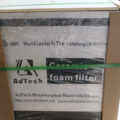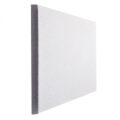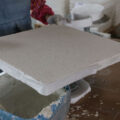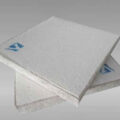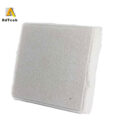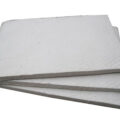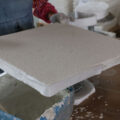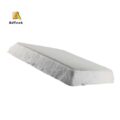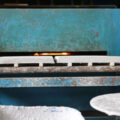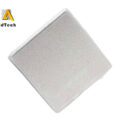Ceramic foam filter board not only can effectively eradicate the chunk of oxide inclusions in aluminum liquid, but also can filter out the powerless small inclusion of a few microns. Because the inclusions easily absorb hydrogen atoms, sodium, potassium, and other harmful ions adsorption, and inclusion forms bubble. So the filtering of inclusions also can reduce these harmful elements and gas content in liquid aluminum.

Ceramic Foam Filter Board
The foam ceramic board is based on the continuous mesh foam plastic as the frame, which is immersed in mud and then calcined at high temperatures. Therefore, the raw materials for making filter plates can be divided into: foam and mud.
Foam
The foam used in the production of AdTech ceramic foam filter board should have sufficient elasticity and strength to ensure that it has recoverability and resistance to breakage when immersed in the slurry. There will be no local dents, cracks, etc. during the immersion stage.
Mud
The mechanical properties and surface quality of ceramic filter plates are directly related to the mud. General requirements for the production of mud for ceramic filter plates:

(1) It should have a suitable viscosity. The viscosity is low and the bubble absorption of the mud is insufficient, which will reduce the strength of the filter plate and the specific gravity. Although the high viscosity can improve the strength, it will cause too many die holes and even cause the slag drop on the surface.
(2) The mud also has a certain fluidity to ensure that the mud is easy to squeeze in and out when the foam is immersed.
(3) The main raw materials of the mud should have a certain degree of hydrophilicity to ensure that the mud forms a uniform suspension. If the hydrophilicity is poor, the solids in the mud are easy to precipitate during the dipping process and stay on the foam, causing dead holes and increased brittleness of the filter plate.
A good slurry, the hand feels very smooth, fine and uniform, and can be stored for a long time without precipitation. The composition of the mud and the specifications of the raw materials have a decisive impact on the performance of the mud. Even if it is the same raw material, the specifications are slightly different, and the variable compressive strength and surface brittleness of the finished product will be greatly different.

